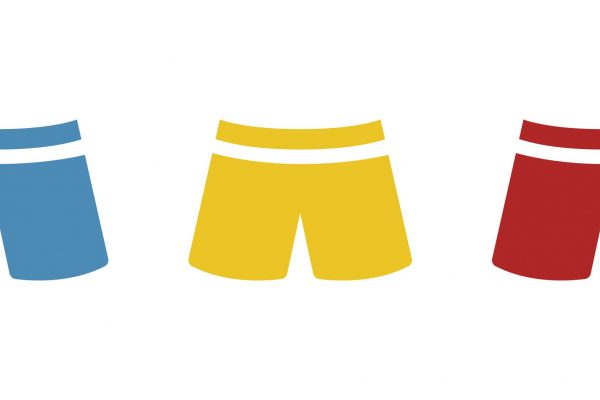Home>Misc>Featured>How Many Times A Week Should I Workout My Chest


Featured
How Many Times A Week Should I Workout My Chest
Published: August 12, 2023
Find out how often you should train your chest for maximum results. Get expert tips and advice on Featured, the ultimate resource for all things fitness.
Introduction
When it comes to building a more well-rounded and aesthetically pleasing physique, working out the chest muscles is a common focus for many individuals. A strong and chiseled chest not only adds to a person’s overall physical appearance but also contributes to better posture and upper body strength.
However, figuring out the optimal frequency to train the chest muscles can be a daunting task. Should you work out your chest once a week, twice a week, or even more? The answer varies depending on various factors, including your training goals, recovery ability, and level of fitness.
Understanding these factors and the different frequency options available will help you design a chest workout routine that is both effective and sustainable. In this article, we will explore the different factors to consider, the frequency options, and the benefits and drawbacks of each.
Whether you are a beginner trying to build a solid foundation or an experienced lifter looking to take your chest gains to the next level, this article will provide you with the knowledge and insights to make informed decisions about your chest workouts.
Factors to Consider
Before determining how many times a week you should work out your chest, it is important to consider several key factors. These factors will help you tailor your training frequency to meet your specific goals and needs:
1. Training Experience: Your level of training experience plays a significant role in determining the optimal frequency for chest workouts. Beginners typically need more time to recover since their muscles are not accustomed to intense training. On the other hand, experienced lifters have developed better recovery abilities and can handle more frequent training sessions.
2. Overall Fitness Level: Your overall fitness level and conditioning also influence how often you should train your chest. Individuals with higher fitness levels may require more frequent workouts to challenge and continue progressing their chest muscles.
3. Workout Intensity: The intensity of your chest workouts is another crucial factor to consider. If you perform high-intensity exercises with heavy weights and low repetitions, you may need more time to recover between sessions. Conversely, if your workouts are less intense, you may be able to train your chest more frequently.
4. Recovery Ability: Every individual’s recovery ability differs. Some people naturally recover quickly, while others require more time. It’s important to listen to your body and gauge how well you recover between workouts. If you feel excessively fatigued or notice a decrease in performance, it may be a sign that you need more rest between chest sessions.
5. Training Split: Consider your training split and how your chest workouts fit into your overall workout routine. If you’re training multiple muscle groups on different days, you need to ensure there’s adequate recovery time for your chest before working it again.
6. Goals and Priorities: Finally, your personal goals and priorities should guide your decision about training frequency. If your primary goal is to build a larger chest, you may opt for a higher frequency. However, if you’re focused on overall strength or maintaining muscle mass, a lower frequency may be more suitable.
By taking these factors into account, you can make an informed decision about how many times a week you should devote to working out your chest. Remember, there is no one-size-fits-all answer, and it may require some trial and error to find the frequency that works best for you.
Frequency Options and Recommendations
Now that you understand the factors to consider, let’s delve into the different frequency options for training your chest. Here are three common approaches, along with their respective recommendations:
1. Option 1: Training Chest Once a Week: This is the most common frequency for chest training among recreational lifters. By dedicating an entire workout session to your chest once a week, you can focus on specific exercises and target the muscles from various angles. This approach allows for ample recovery time, making it suitable for beginners and individuals with busy schedules. However, it may not provide enough stimulus for advanced lifters seeking significant chest gains.
2. Option 2: Training Chest Twice a Week: Increasing the training frequency to twice a week can be beneficial for intermediate lifters looking to maximize chest growth. This approach allows for more volume and training stimulus without overwhelming the chest muscles. It can be achieved by splitting your chest workouts into two separate sessions during the week, focusing on different exercise variations or rep ranges. This approach enables better muscle recovery while still providing enough frequency to elicit growth.
3. Option 3: Training Chest Three Times a Week: For advanced lifters with excellent recovery abilities and a stronger chest development goal, training the chest three times a week may be appropriate. This frequency provides a higher training stimulus and increased volume, which can potentially accelerate muscle growth. However, it’s crucial to structure the workouts intelligently, ensuring sufficient rest days between each session and prioritizing proper recovery strategies, such as nutrition and sleep.
It’s important to note that these frequency options are general recommendations, and individual variations exist. Some people may respond better to lower frequencies, while others may thrive with higher frequencies. It’s essential to listen to your body, monitor your progress, and make adjustments accordingly.
Additionally, regardless of the frequency you choose, ensure that each chest workout targets a variety of exercises, including compound movements like bench press, incline press, and dips, as well as isolation exercises like flyes and cable crossovers. This variety will ensure that you stimulate all areas of the chest for optimal growth and development.
Remember, consistency and progressive overload are key when it comes to training frequency. Stick to a routine that is realistic and sustainable for you, and focus on gradually increasing the intensity or volume of your chest workouts over time.
By selecting the appropriate frequency option based on your goals and considering your individual factors, you can create an effective and personalized chest training routine that sets you up for success.
Option 1: Training Chest Once a Week
Training your chest once a week is a common approach that offers several benefits, particularly for beginners and those with limited time. By dedicating an entire workout session to your chest, you can prioritize specific exercises and ensure that you thoroughly target the muscles from various angles.
One advantage of this frequency option is that it allows for ample recovery time. By allowing your chest muscles to rest and recover for an entire week, you give them sufficient time to repair and grow stronger. This is especially important for beginners who may need more time to recover due to their muscles not being accustomed to intense training.
Training your chest once a week can also fit well into a busy schedule. You can plan your workout routine to allocate a specific day solely for chest training, ensuring you have enough time to focus on your chest exercises without feeling rushed.
However, it’s important to note that training your chest once a week may not provide enough frequency to elicit significant muscle growth for advanced lifters. The limited number of workouts per week might not stimulate the chest muscles enough to reach their full potential.
For individuals at an intermediate or advanced level who are looking to maximize chest growth, incorporating higher training frequency options may be more beneficial. Training the chest once a week may be suitable for maintenance or for targeting other muscle groups more frequently, depending on your specific goals and priorities.
Remember, regardless of the frequency, it’s crucial to execute your chest workouts with proper form, intensity, and volume. Focus on compound movements such as the bench press, incline press, and dips to target the main chest muscles effectively. Supplementing with isolation exercises like flyes or cable crossovers can help further develop specific areas of the chest.
Consistency and progressive overload are essential factors in achieving chest growth. Gradually increase the intensity or volume of your workouts over time to continuously challenge your chest muscles. Monitor your progress, adjust accordingly, and always listen to your body, taking rest days as needed.
While training your chest once a week is a viable frequency option, remember that individual variations exist. Pay attention to your body’s response and make adjustments as necessary. Finding the frequency that suits your goals and recovery abilities is key to building a strong and well-developed chest.
Option 2: Training Chest Twice a Week
Increasing the frequency to training your chest twice a week can be a beneficial approach for intermediate lifters looking to maximize chest growth. This frequency option allows for more volume and training stimulus without overwhelming the chest muscles.
By splitting your chest workouts into two separate sessions during the week, you can focus on different exercise variations or rep ranges, providing optimal stimulation to the chest muscles. For example, you can dedicate one session to heavy compound movements like bench press and incline press, and the other session to isolation exercises like flyes and cable crossovers.
The increased frequency of twice a week provides a consistent training stimulus for the chest, promoting muscle growth and development. This option also allows for adequate recovery time between sessions, ensuring that the muscles have enough time to repair and grow stronger.
Training your chest twice a week can also help with breaking plateaus and promoting muscle hypertrophy. It provides an opportunity to focus on different aspects of chest training in each session, allowing for more comprehensive chest development.
However, it’s important to ensure that each workout is properly structured and balanced. Avoid performing the same exercises or focusing on the same muscle groups in both sessions. Instead, aim for variety and target different areas of the chest to ensure overall development.
Additionally, listen to your body and adjust the intensity and volume of your workouts accordingly. If you find that training your chest twice a week is causing excessive fatigue or compromising recovery, consider reducing the volume or incorporating active recovery techniques like foam rolling or stretching between sessions.
It’s worth noting that training your chest twice a week might not be suitable for everyone. Individuals with limited recovery abilities or other demanding training goals may find this frequency too high. As always, consider your own individual factors, such as training experience, overall fitness level, and recovery ability, when determining the best frequency for your chest workouts.
With the right programming and careful attention to form and technique, training your chest twice a week can be an effective strategy for intermediate lifters aiming to enhance chest growth and achieve a more well-rounded physique.
Option 3: Training Chest Three Times a Week
For advanced lifters with excellent recovery abilities and a strong desire for chest development, training the chest three times a week can be a suitable frequency option. This increased frequency provides a higher training stimulus and volume, potentially accelerating muscle growth and strength gains.
When training your chest three times a week, it’s essential to structure your workouts intelligently to ensure proper recovery and avoid overtraining. Here are a few considerations to keep in mind:
Vary Your Training: Aim to incorporate different exercises and rep ranges in each session. This will help target various aspects of chest development, including strength, hypertrophy, and endurance. For example, one session can focus on heavy compound exercises like bench press and incline press, another session can prioritize isolation exercises like dumbbell flyes and cable crossovers, and the third session can involve higher-volume circuit-style workouts.
Manage Intensity and Volume: Pay attention to your overall training load and adjust the intensity and volume accordingly. While training your chest three times a week can provide an opportunity for growth, it’s crucial to avoid excessive fatigue and compromise recovery. Monitor your performance and recovery markers, such as strength levels, energy levels, and muscle soreness, to make sure you’re not overdoing it.
Allow for Sufficient Rest: Ensure that there are enough rest days between each chest workout to allow for proper recovery. These rest days can be utilized for training other muscle groups or focusing on active recovery techniques such as foam rolling and stretching. Adequate nutrition, hydration, and sleep are also crucial during this frequency to optimize recovery.
Benefits of Training Chest Three Times a Week
1. Increased Muscle Stimulus: Training your chest more frequently provides a higher overall training stimulus. This can lead to enhanced muscle growth, strength gains, and improved muscle definition.
2. Optimized Muscle Protein Synthesis: By training your chest more frequently, you can stimulate muscle protein synthesis multiple times throughout the week, promoting muscle repair and hypertrophy.
3. Breaking Plateaus: Training your chest three times a week can help break through strength and muscle growth plateaus that may have been reached with lower training frequencies.
Drawbacks of Training Chest Three Times a Week
1. Increased Recovery Demand: Training your chest three times a week requires better recovery abilities than lower frequencies. It is crucial to monitor your body’s response to avoid overtraining or compromising recovery.
2. Time Commitment: Training your chest three times a week may require more time and dedication to fit the additional workouts into your schedule. Ensure that you can commit to the time required for these sessions without compromising other aspects of your life.
While training your chest three times a week can be beneficial for advanced lifters, it may not be suitable for everyone. Consider your individual factors, such as recovery ability, training experience, and overall fitness level, when determining the best frequency for your chest workouts. Always listen to your body and make adjustments as necessary to ensure ongoing progress and prevent injury.
Benefits and Drawbacks of Different Frequencies
Choosing the right frequency for training your chest is essential for maximizing muscle growth and achieving your fitness goals. Let’s explore the benefits and drawbacks of different training frequencies:
Benefits of Low Frequencies (Once a Week)
- Ample Recovery Time: Training your chest once a week allows for adequate recovery, making it suitable for beginners or individuals with limited recovery abilities.
- Time Efficiency: With only one dedicated chest workout per week, this frequency option is convenient for those with busy schedules.
- Focused Training: By dedicating an entire session to your chest, you can prioritize specific exercises and fully target the chest muscles, promoting better muscle activation and engagement.
Drawbacks of Low Frequencies (Once a Week)
- Limited Stimulus: Training your chest once a week may not provide enough frequency to elicit significant muscle growth for advanced lifters.
- Potential Plateaus: With fewer opportunities for training stimulus, progress may slow down over time, and plateaus may be more difficult to overcome.
- Missed Muscle-Building Opportunities: Other muscle groups may not receive as much attention and stimulation if a significant portion of your training focus is on the chest once a week.
Benefits of Moderate Frequencies (Twice a Week)
- Increased Training Stimulus: Training your chest twice a week provides more opportunities to stimulate muscle growth and strength gains.
- Enhanced Chest Development: With targeted chest workouts spread across two sessions, you can focus on different exercise variations, rep ranges, and areas of the chest for more comprehensive development.
- Progressive Overload: The increased training frequency allows for progressive overload to be implemented more effectively, leading to continued muscle growth and adaptation.
Drawbacks of Moderate Frequencies (Twice a Week)
- Potential Overtraining: Training your chest twice a week requires careful management of intensity and volume to avoid overtraining and potential burnout.
- Time and Recovery Demand: Allocating two dedicated chest sessions per week may require more time and commitment, as well as better recovery strategies to allow for adequate rest.
- Individual Variations: While beneficial for many individuals, this frequency may not suit everyone, especially those with lower recovery abilities or different training priorities.
Benefits of High Frequencies (Three Times a Week)
- Maximized Training Stimulus: Training your chest three times a week provides a more consistent and intense training stimulus, promoting muscle growth and strength gains.
- Accelerated Progress: The increased frequency can help break through plateaus and push your chest development to new heights.
- Optimized Muscle Protein Synthesis: Stimulating muscle protein synthesis multiple times a week supports optimal muscle repair and growth.
Drawbacks of High Frequencies (Three Times a Week)
- Higher Recovery Demands: Training your chest three times a week requires superior recovery abilities to avoid overtraining and potential injuries.
- Time Commitment: Allocating more training sessions exclusively for your chest may demand more time and dedication, which may not be feasible for everyone.
- Individual Variations: While beneficial for advanced lifters, this high frequency may not be suitable for individuals with limited recovery abilities or other demanding training goals.
Remember, finding the right frequency for your chest workouts depends on your individual factors, such as training experience, overall fitness level, recovery ability, and goals. It’s important to experiment, monitor your progress, and make adjustments as needed to continue making consistent gains and achieving your desired level of chest development.
Individual Variations and Listen to Your Body
When it comes to determining the optimal frequency for training your chest, it’s crucial to consider individual variations and listen to your body. Everyone’s body is unique, and what works for one person may not work for another. Pay attention to how your body responds to different training frequencies and adjust accordingly.
Factors such as genetics, age, recovery abilities, and overall fitness level can greatly influence how often you should work out your chest. Some people have naturally faster recovery times and can handle higher training frequencies, while others may require more time to recover between sessions.
It’s essential to listen to your body and watch for signs of overtraining or inadequate recovery. Pushing beyond your body’s limits can lead to diminished results, increased risk of injury, and overall burnout. If you find that your performance is consistently declining, you feel excessively fatigued, or you are experiencing persistent muscle soreness, it may be a sign that you need to decrease your training frequency or incorporate more rest days.
Conversely, if you’re recovering quickly, making consistent progress, and consistently challenging your chest muscles, you may be able to handle higher training frequencies. Pay attention to your strength levels, muscle pumps, energy levels, and overall muscle development to gauge the effectiveness of your training frequency.
Remember that recovery involves more than just physical rest. Proper nutrition, hydration, and sleep are vital to supporting your body’s recovery processes. Adequate protein intake, hydration levels, and quality sleep will help optimize your recovery and muscle growth.
It’s worth noting that as you progress in your training journey, your ability to handle higher training frequencies may increase. Initially starting with lower frequencies and gradually increasing as you become more advanced is a common approach. However, this may not be the case for everyone, and individual variations should be taken into account.
Regardless of the frequency you choose, consistency is key. Stick to a training routine that is realistic and sustainable for you. Progressively overload your chest workouts by increasing weight, volume, or intensity over time to continue challenging your muscles and promoting growth.
Lastly, consider seeking guidance from a qualified fitness professional or coach who can assess your individual needs and provide personalized recommendations for your chest training frequency.
By taking into account individual variations, listening to your body, and making adjustments as necessary, you can find the optimal frequency for training your chest and achieve your desired results effectively and safely.
Conclusion
When it comes to training your chest, finding the right frequency is essential for maximizing muscle growth and achieving your fitness goals. With the various frequency options available, it’s important to consider your individual factors, goals, and recovery abilities.
Beginners and individuals with limited recovery abilities may benefit from training their chest once a week. This frequency allows for ample recovery time and focused training. Intermediate lifters looking to maximize chest growth may opt for training their chest twice a week, providing increased volume and targeted stimulation. Advanced lifters with excellent recovery abilities and a strong desire for chest development may find training their chest three times a week to be beneficial, optimizing muscle protein synthesis and progressing faster.
However, individual variations exist, and listening to your body is crucial. Pay attention to your body’s response, monitor progress, and make adjustments as necessary to avoid overtraining and promote proper recovery. Factors such as genetics, age, overall fitness level, and recovery abilities can influence how often you should train your chest. It’s important to find the right balance to ensure ongoing progress and prevent injury.
Regardless of the frequency, consistency is key. Focus on proper form, technique, and progressive overload in your chest workouts to continue challenging your muscles and promoting growth. Combine compound exercises with isolation exercises to target all areas of the chest.
Lastly, remember that building a strong and well-developed chest takes time and patience. It’s important to have realistic expectations and not compare your progress to others. By staying consistent, listening to your body, and adjusting your frequency based on individual needs, you will be on the path to achieving a strong and aesthetic chest.







